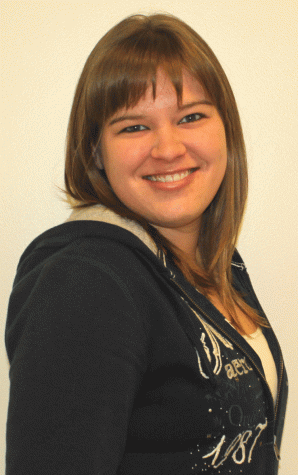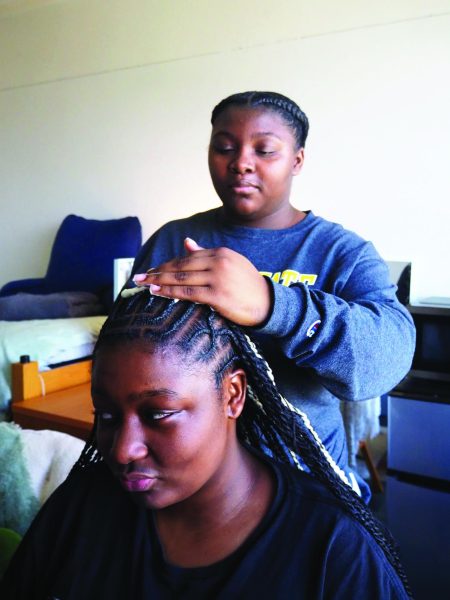Finding the answer for an AIDS-free generation
New HIV testing available for babies in Sub-Saharan Africa
February 25, 2015

Dr. Charles Wood, a UNL professor, spoke in Gardner Auditorium about HIV on Feb. 20.
In 2012, Hillary Clinton, then U.S. Secretary of State, said, “We will be on a path toward an AIDS-free generation.”
Dr. Charles Wood is making that happen.
Wood, professor at the University of Nebraska at Lincoln, told students on Friday that HIV is the “best studied virus ever known.”
And he would know.
Since HIV—the virus that can cause the disease AIDS—showed up in the mid ‘80s, Wood has studied HIV in Zambia, Africa.
He and his team, or, the Wood laboratory, discovered that “HIV infects 30 percent of Zambia’s normal female population. Therefore, the implications for disease development and transmission of HIV to babies are enormous.”
The believed beginning of the virus was due to monkeys upstream in Congo, near the Sangha River. The virus jumped host from the chimpanzees to humans in the early 1900’s.
When humans began to settle downstream in what is now the capital city of Congo, Kinshasa, in the 1950’s, trade and use of the river became more common, causing the HIV virus spread among humans.
It made it across the ocean to America in the ‘70s, according to Wood.
HIV is a “highly mutating virus,” and therefore is difficult to create a vaccine for it. However, a cure can only come around if HIV is understood, and Wood is doing his part to research it.
There is a drug to help suppress the virus, but, unfortunately, most women in Zambia do not take the drug, and therefore are passing on the virus to their babies.
Because there are three ways newborns contract HIV from their mothers, there are three ways to prevent perinatal transmission of HIV: treating mothers before they give birth, birth by caesarian section and blocking breastfeeding.
Since 10 to 25 percent of newborns that have HIV contract it during pregnancy, treating the mothers with the anti-virus drug would reduce that figure by 10 to 25 percent, potentially eliminating the cases of HIV contracted during pregnancy.
About 35 to 40 percent of mother-to-child HIV transmissions occur during the birthing process, so, complementarily, nearly the same number of cases could be ruled out by opting for birth by caesarian sections.
Likewise, 35 to 40 percent of HIV transmission occurs post-partum, mostly from breastfeeding. “Blocking breastfeeding,” according to Wood, “would reduce cases by 35 to 40 percent.”
“This is why we don’t see affected babies in the U.S.,” Wood said.
But if a prevention is known, why are there still so many affected babies in Africa?
“Medical research is not really high in anybody’s mind,” Wood said. The people are more worried about finding food than they are medical knowledge.
However, due to the work of the Wood laboratory, the 2008 figure of infected babies—28 percent—is now down to 5 percent.
And, more generally, in lower to middle income countries, the number of new infected babies—430,000—was nearly cut in half in just two years.
Why?
“Because of education,” Wood said. “There’s hope that if [research and application] keep going this way, we can achieve an AIDS-free generation.”









